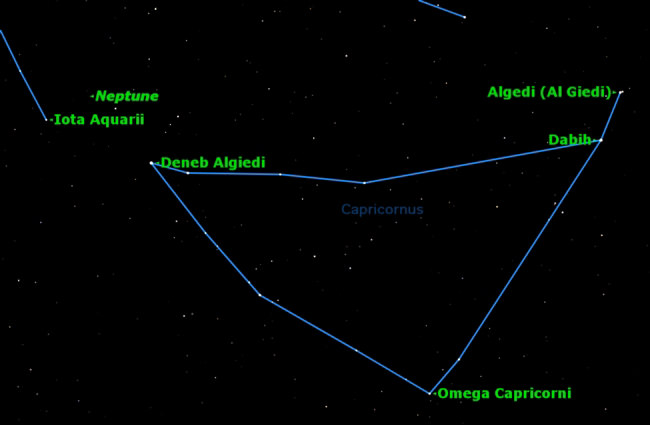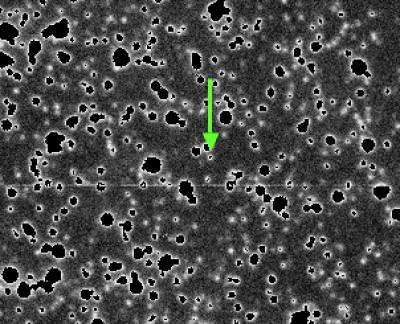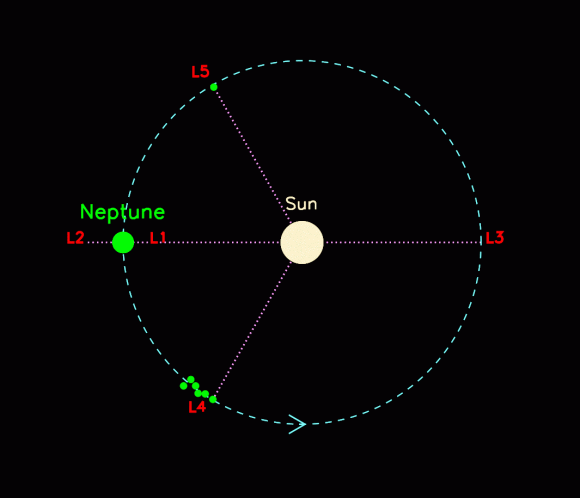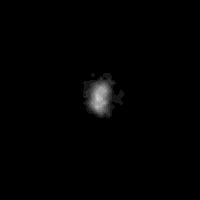[/caption]
This summer, the New Horizons spacecraft was awoken for its annual systems checkout, and took the opportunity to exercise the long range camera by snapping pictures of Neptune, which at the time, was 3.5 billion km (2.15 billion miles) away. The Long Range Reconnaissance Imager (LORRI) snapped several photos of the gas giant, but Neptune was not alone! The moon Triton made a cameo appearance. And the New Horizons team said that since Triton is often called Pluto’s “twin” it was perfect target practice for imaging its ultimate target, Pluto.
This image gets us excited for 2015 when New Horizons will approach and make the closest flyby ever of Pluto.
“That we were able to see Triton so close to Neptune, which is approximately 100 times brighter, shows us that the camera is working exactly as designed,” said New Horizons Project Scientist Hal Weaver, of the Johns Hopkins Applied Physics Laboratory. “This was a good test for LORRI.”
Weaver pointed out that the solar phase angle (the spacecraft-planet-Sun angle) was 34 degrees and the solar elongation angle (planet-spacecraft-Sun angle) was 95 degrees. Only New Horizons can observe Neptune at such large solar phase angles, which he says is key to studying the light-scattering properties of Neptune’s and Triton’s atmospheres.
“As New Horizons has traveled outward across the solar system, we’ve been using our imagers to make just such special-purpose studies of the giant planets and their moons because this is a small but completely unique contribution that New Horizons can make — because of our position out among the giant planets,” said New Horizons Principal Investigator Alan Stern.
Triton is slightly larger than Pluto, 2,700 kilometers (1,700 miles) in diameter compared to Pluto’s 2,400 kilometers (1,500 miles). Both objects have atmospheres composed mostly of nitrogen gas with a surface pressure only 1/70,000th of Earth’s, and comparably cold surface temperatures approaching minus-400 degrees Fahrenheit. Triton is widely believed to have been a member of the Kuiper Belt (as Pluto still is) that was captured into orbit around Neptune, probably during a collision early in the solar system’s history.
Source: New Horizons








